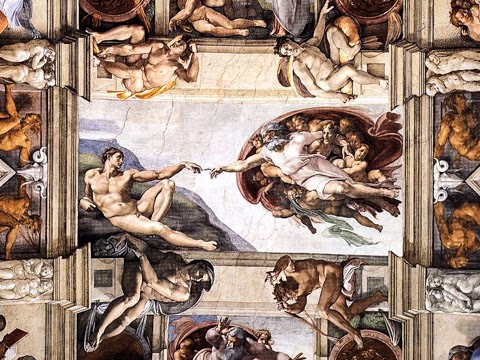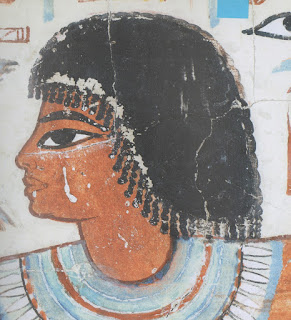How to create colours
Today we can buy tubes or tubs of paint in just about every colour you can imagine. But over six hundred years ago artists had to mix up their own colours. They would buy the paint in form of a coloured powder or pigment that may mix it with a liquid binder. These are some of the pigments that may have been used to create the illuminated manuscript -
Orange
The mineral cinnabar was crushed to make the orange- red colour. This contained mercury, which is now known to be slowly posionous.
Blue
The deep rich blue colour called ultramarine was more expensive than gold because the rock lapis lazuli was imported from Afghanisthan. It was reserved for painting the regal gowns and the amount to be used was specified by the patron of the work in the contract.
Gold
Gold was the most expensive colour after ultramarine. It was beaten into very thin sheets to make gold leaf. Gold leaf was applied to the picture and then made shiny by burnishing it with a stone.
Green
When copper is exposed to air over time a brilliant green coating forms called verdigris. This coating was used by artists in their painting. To make verdigris, artists left a real copper coin in a dish of vinegar. The copper was melted, cooled and the separated into shavings to ground into powder for pigment.
White
The brilliant opaque white of the white garments was painted in lead white. It was a very common pigment manufactured from metal. The lead content made it poisonous if a person was in contact with it for a while. It has now been replaced by zinc or titanium.
Pink
The purple-red colour came from a plant dye made from the root of a plant called madder. The madder roots were dried in the sun and then ground into a powder.
Purple
Crused sunflower seeds made the lilac shade of the colour purple.
Black
By burning animal bones in a sealed container, a pigment of deep blue-black to brown-black colour was produced. This was called bone black.
Tempera Colour
Artist's workshops in the Middle Ages were busy places. The apprentices would prepare the materials and colours, while the main artists painted.
- The dry pigments were ground and mixed with water to form a paste. This was skilled work as grinding some pigments too much could spoil the colour.
- Egg yolk was separated from the white, pierced and collected in a container. A little water was added before the yolk was mixed with the pigment paste.





































